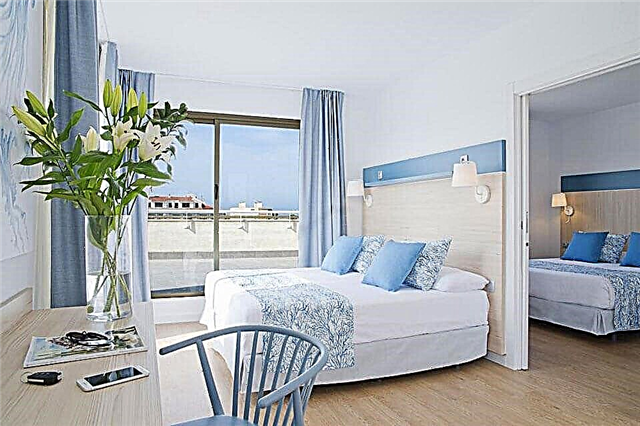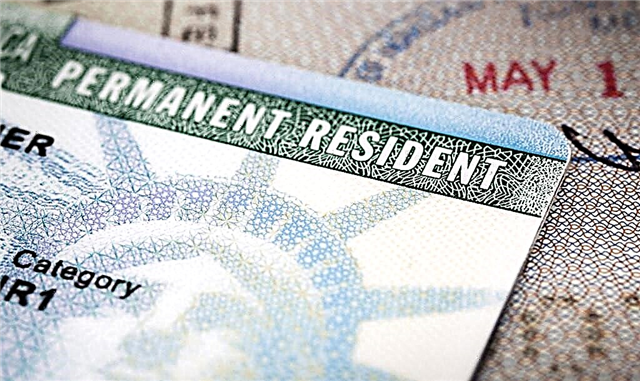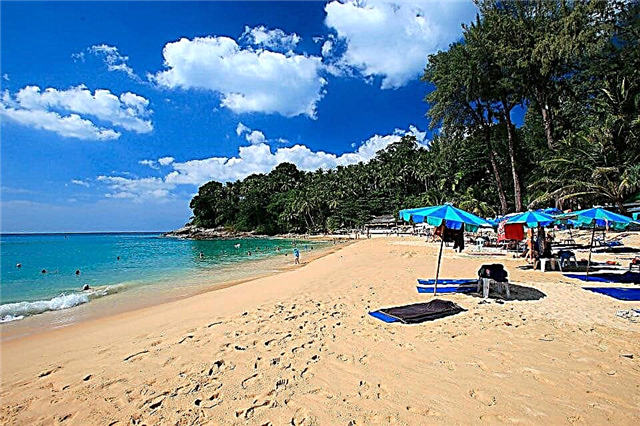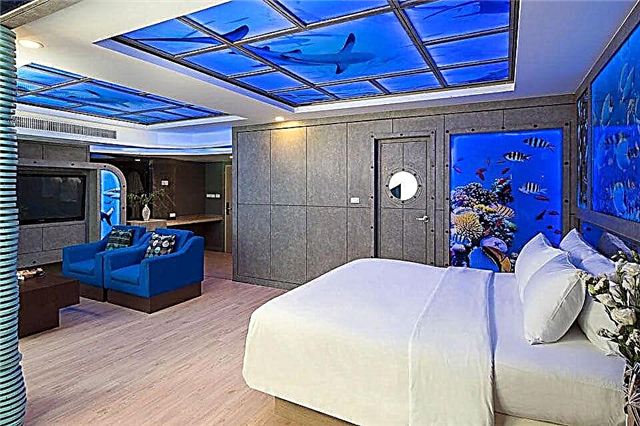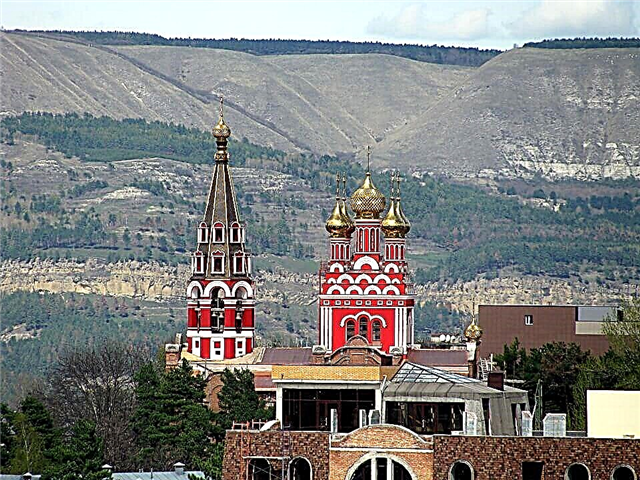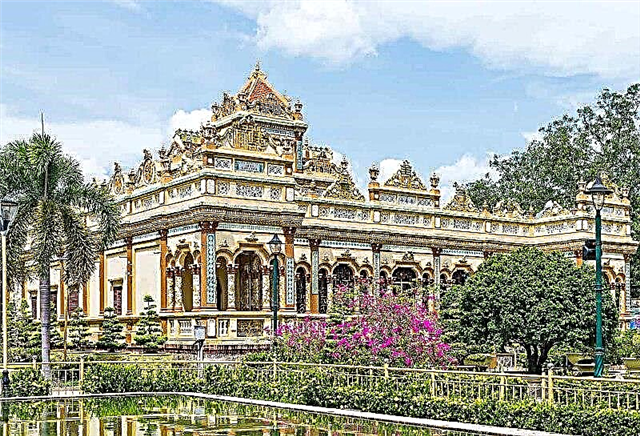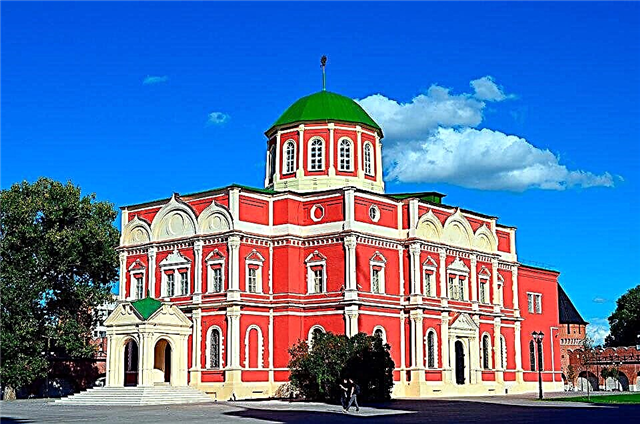What associations do a person have when they mention Tula? Of course, "Tula gingerbread", "Tula gunsmiths", and even the saying "go to Tula with your samovar." That is, for what the city is famous for. More, as a rule, no one will say anything about this glorious place. But if you open it for yourself, you will be surprised - how many historical and cultural values there are. Even if you get here for a short time, you will have time to see the main attractions. So, what to see in Tula in 1 day on your own?
Tula Kremlin
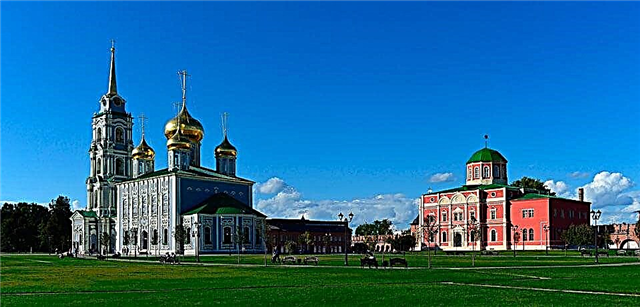
It can be called one of the main attractions of the city. The Kremlin dates back to the 16th century and was built for defensive purposes in order to protect the road to Moscow from the Crimean Tatars. At the beginning of the 17th century. False Dmitry the First hosted the reception on the territory of the Kremlin in Tula. In the same 17th century, when Russia's borders expanded, the Kremlin was losing its military role. Today it is a monument of history and architecture. In addition to walking around the territory of the Kremlin, visiting cathedrals, and the first city power plant, tourists can see expositions telling about medieval torture, admire the weapons of Russian soldiers. The Kremlin is located at 2 Mendeleevskaya Street.
Assumption and Epiphany Cathedrals of the Tula Kremlin
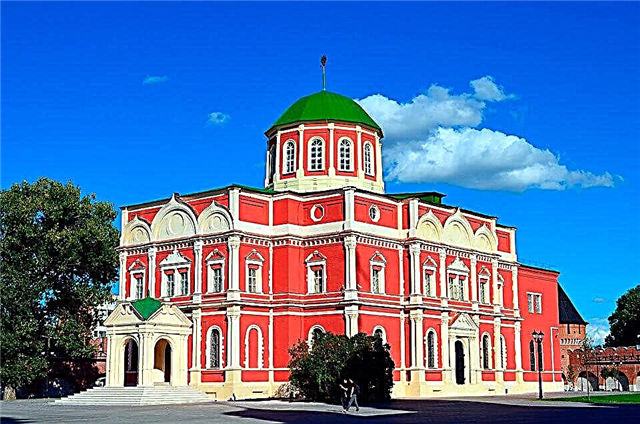
The Holy Dormition Cathedral stands in the center of the Kremlin. The first temple on this site appeared in the 16th century, then it was replaced by a stone one, but it also did not survive - it was simply dismantled. The current cathedral dates back to the 18th century, funds for its construction were allocated by local merchants. After the death of Emperor Alexander the First, for some time there was a hearse with the body of the deceased ruler of Russia in this cathedral.
In the Assumption Cathedral, the militia soldiers who went to battle with Napoleon were also blessed. The rich historical past, the unusual design of the cathedral, unique icons attract many tourists here. Another cathedral located on the territory of the Kremlin - Epiphany - now does not belong to the church. It houses the Museum of Weapons. The cathedral was built in the middle of the 19th century. in memory of those killed in the war of 1812. During the Soviet era, it underwent a significant restructuring.
City Kremlin Garden
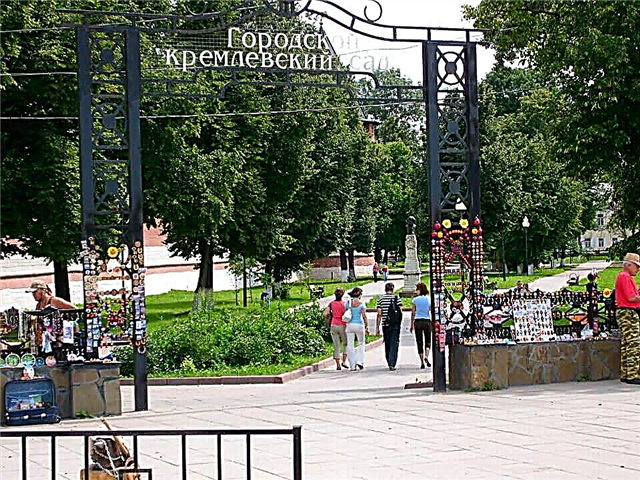
An old beautiful old garden in the center of the city. It spreads out where there was a protective ditch near the walls of the Kremlin. It was opened in the first half of the 19th century. The heir to the throne, the future Alexander II, also visited the garden. The garden was divided into "Upper" and "Lower". In previous years, the latter housed an indoor pavilion where music was played and couples danced. In the "Upper" garden, there was a summer theater, a buffet and an entertainment area for children. And then there were graceful pavilions and benches. The park is still a favorite resting place of the townspeople today.
All Saints Cathedral
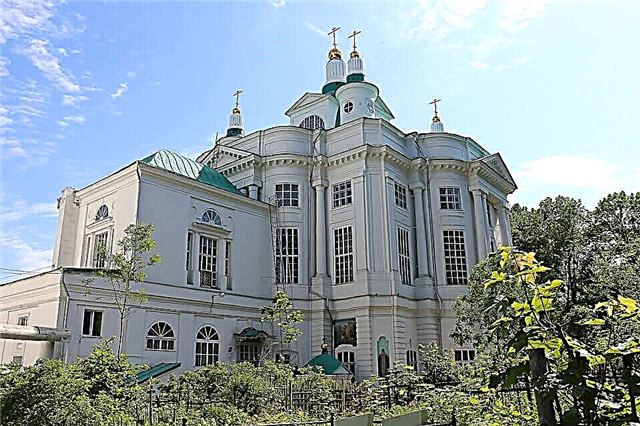
When in the 18th century. a new cemetery was laid in the city, it was decided to build a stone temple here. As always, local merchants played an important role here: they allocated funds, supervised the construction. The temple turned out to be one-story, later another floor was built on. In the 20th century. there was a church of the "renovationists", Moscow artists painted the temple.
In 1960, the cathedral was recognized as a monument of history and culture, in the late 70s the high bell tower was reconstructed. It was in this cathedral in 1988 that the 1000th anniversary of the baptism of Rus was solemnly celebrated. The main shrine of the temple is the icon of the Kazan Mother of God, dating back to the 17th century. The cemetery and the cathedral are located next to Lenin Avenue.
Exotarium

The zoo (exotarium) was opened in 1987. Initially, a little over 100 animal species could be seen in it. But the exotarium has also defined its own specialization - the preference is given to reptiles. To make it clear to everyone and everyone, the dinosaur, the brightest and most memorable of the reptiles, has become the symbol of the zoo. Today, nowhere else can you see such a huge collection of captive snakes.
About 100 thousand people visit the exotarium annually. A ticket for adults costs 200 rubles, for children 150. You can walk around the zoo and see its inhabitants both independently and as part of an excursion. It also hosts various exhibitions, holidays, and themed events. The address of the zoo is Oktyabrskaya Street 26.
Museum "Necropolis of the Demidovs"
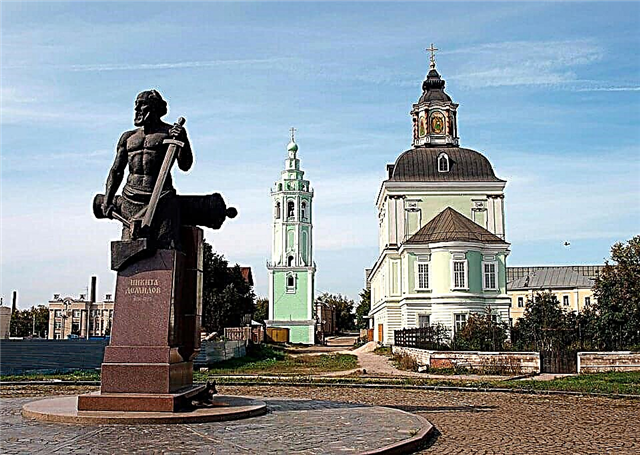
At one time, the Demidov dynasty of entrepreneurs was known throughout the world. Among these people were miners, travelers, writers, industrialists. The Demidovs were also distinguished by their generous donations for good deeds. The memorial complex "Necropolis of the Demidovs" was opened in 1996, to the 340th anniversary of the genius Nikita Demidov.
Guests can bow to the glorious representatives of the family in the Demidov tomb. Also, the guide will tell you about the places associated with the memory of the representatives of the dynasty. The address of the museum is Demidovskaya Street 9. It is open every day, except Mondays. The ticket price for adults is 100 rubles.
Tula State Museum of Weapons
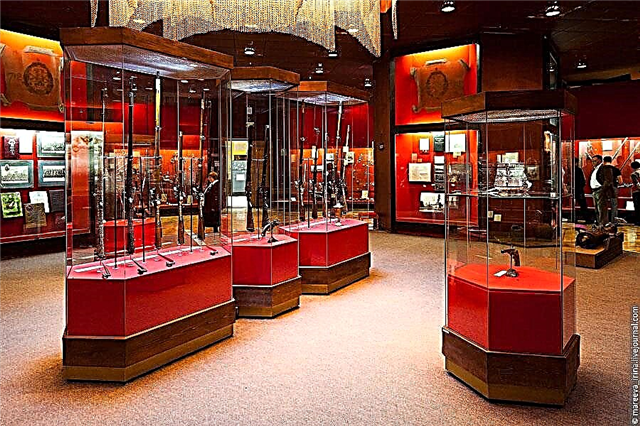
Since Tula in the 16th century. served as a defensive line, there was a great need for weapons. The metal was obtained from brown iron ore - the deposit was nearby. Moscow and Tula gunsmiths exchanged their secrets. An arms factory founded by Peter the Great began its work in 1712. He supplied a large amount of the necessary weapons. But the craftsmen left the most beautiful weapons at the factory. By order of Empress Catherine II at the end of the 18th century. here the "Chamber of Rare Weapons" was created.
Later, the collection was supplemented by the exhibits of the Moscow Armory, but at the end of the 19th century. returned back to Tula. In the first years of Soviet power, the museum was located in the factory shop. Later, during the Great Patriotic War, he was evacuated, and returned back in 1945. In the late 1980s, the museum moved to the Epiphany Cathedral. The new museum building was opened in 2012. In it you can see a collection of weapons dating back to the 16th century. to this day. So, one museum building is located in the Kremlin, the other at st. October 2.
Gingerbread Museum
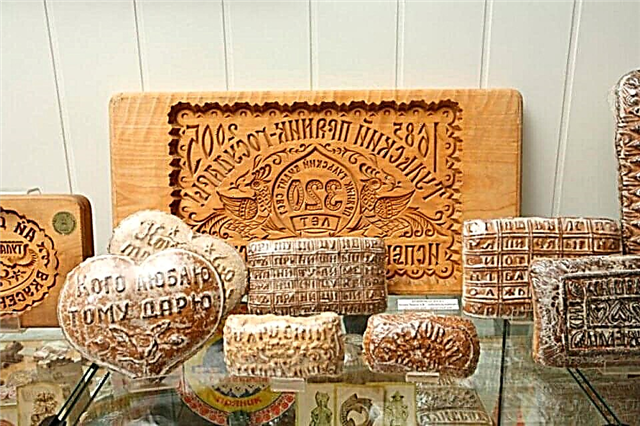
It is impossible to visit Tula and not taste the famous Tula gingerbread. Better yet, visit a special museum dedicated to them. Here they will tell you the history of gingerbread, tell you about how they were "printed" back in the 17th century. Gingerbread was and remains a real art. Special gingerbread cookies were made for weddings, for commemoration, there were gift and honor cakes and many, many other types of them.
In the museum you will see gingerbread cookies dedicated to important dates - for example, the Battle of Kulikovo, look at the forms that famous pastry chefs used to make delicacies. And, of course, you can buy different types of souvenir gingerbread in the museum shop. The museum is located at the address: Oktyabrskaya street, 45 a. Tours are held from 10 am to 4 pm, during the master classes you will be given the opportunity to make a gingerbread yourself.
Museum "Tula Samovars"

This relatively new museum opened in 1990. But Tula samovars were famous several centuries before that. Initially, interesting samples of samovars began to be collected by employees of the Tula Historical, Architectural and Literary Museum. Their collection formed the basis of the Tula Samovars Museum. Today the exhibits are housed in two of its halls.
In addition to the samovars themselves, there are also medals that were received at exhibitions by the masters who made them. There are also 5 small samovars, which the children of the last Russian emperor received as a gift. By the way, beautiful souvenir samovars were also made in Tula for prominent Soviet figures. The museum is located at Mendeleevskaya Street 8.
Monument "Tula Gingerbread" on Lenin Square
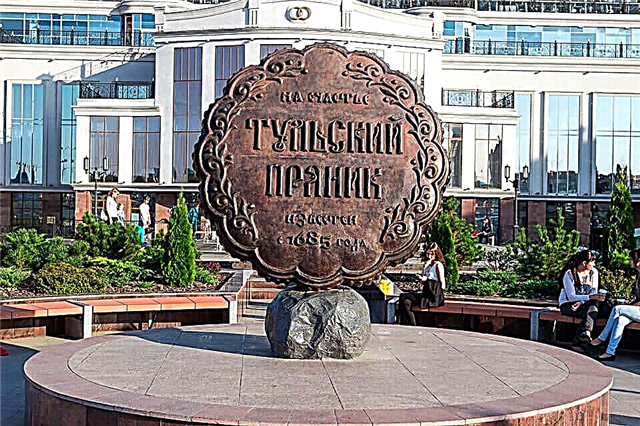
Tula is a city with many unusual and very soulful monuments. So, there is, for example, a bronze "Tula gingerbread".The monument was inaugurated in 2014, on Lefty Day. It is located near the Wedding Palace. The monument is quite large - more than 2 m, it has a round shape and a considerable weight - about 1300 kg. He glorifies the Tula craftsmen and the most famous delicacy: after all, gingerbread in the city began to be made back in the 17th century.
Monument to Nikita Demidov
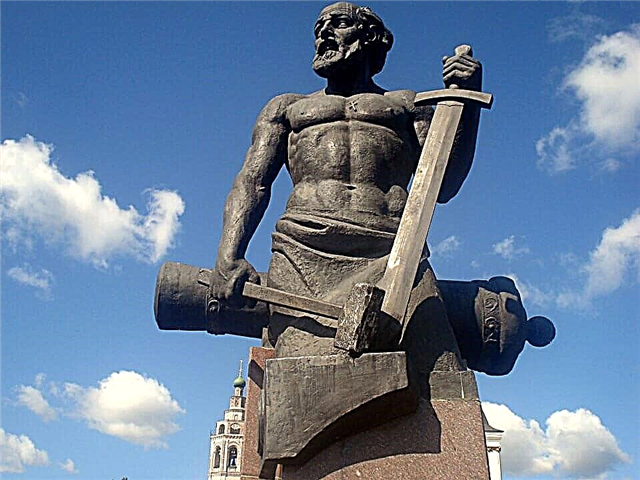
To see this monument, one has to come to the square, which is located near the Nikolo-Zaretskaya church. It is Nikita Demidov who is the founder of the famous dynasty. The monument was made by the sculptor A.I. Chernopyatov, and it was opened in 1996. The Demidovs' metallurgical plant celebrated its 300th anniversary this year.
Sculpture "Tula Tea Party"
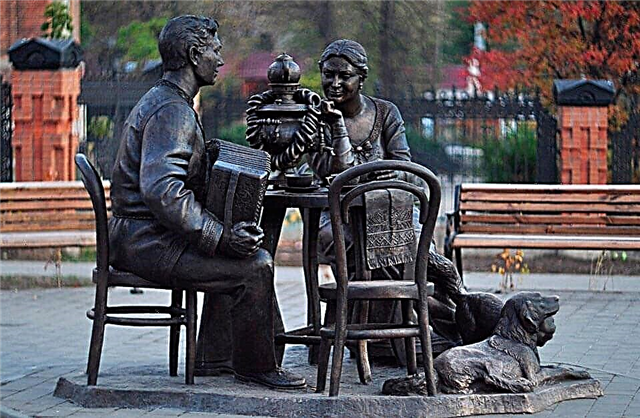
This sculpture can be seen if you enter Tula from the north. It is located on Puzakov Street, near the Church of St. Sergius of Radonezh. The monument depicts a tea party. At the table is a man with an accordion in his hands, and next to him is a woman who listened to him playing. There is a samovar on the table, and, of course, there is also a gingerbread. A cat and a dog gathered near the owners. In a word, the main souvenirs of Tula - gingerbread and samovar - are reflected here. Everyone who sees the sculpture understands that he has come to the city, where guests are welcome. And they will sit at the table, and give them tea.
Polenovo
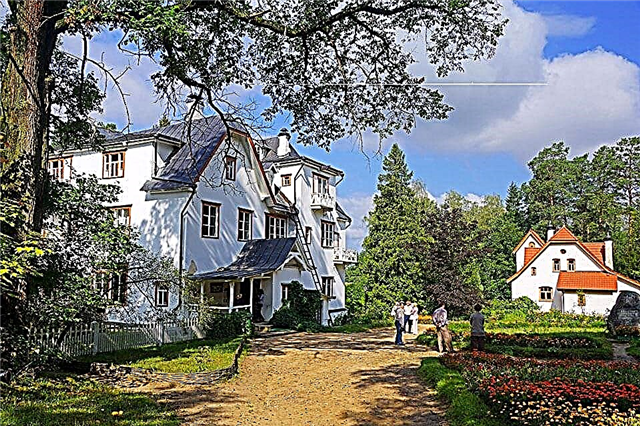
The estate of the famous Russian artist Vasily Polenov is also located in this region. It has been perfectly preserved, even the park and flower gardens, which the artist himself had laid out, have survived. Since the end of the 19th century. here, to visit the painter, artists and students regularly came. Today the manor house includes a number of buildings. Among them are the Big House, where the artist's collections and personal belongings are collected, the Abbey - Polenov's workshop, the Admiralty - the place where the boats were kept, the City of Masters - the exhibition hall.
You can get to the estate either by car or by train. The museum is open from 11 am to 6 pm, except Mondays and Tuesdays. Tickets must be purchased separately for visiting each home. So, an adult tourist can visit the Big House for 200 rubles, and the exhibition hall - for 100 rubles. There are discounts for pensioners and schoolchildren.
Mother of God Palace Museum and Park
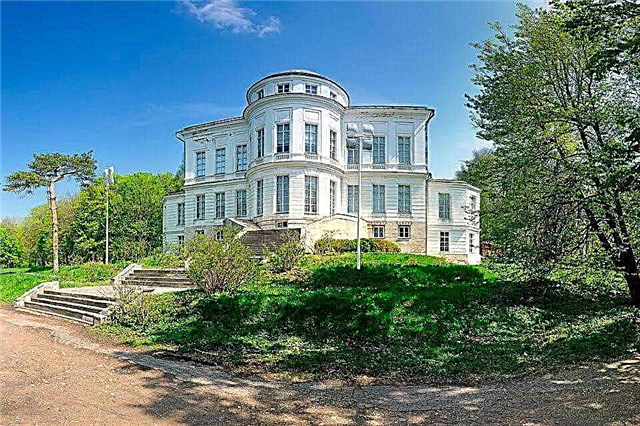
Back in 1918, after the establishment of Soviet power, a museum was opened in the palace of the Bobrinsky counts. He worked until 1925. In 1975, when the palace was restored after the war, a branch of the Tula Art Museum was opened here. In 1980, the museum became a historical and art museum, and in 1988 a whole complex was formed - the Palace Museum and the park. It works every day, except Monday, the ticket price is 200 rubles.
Kulikovo field
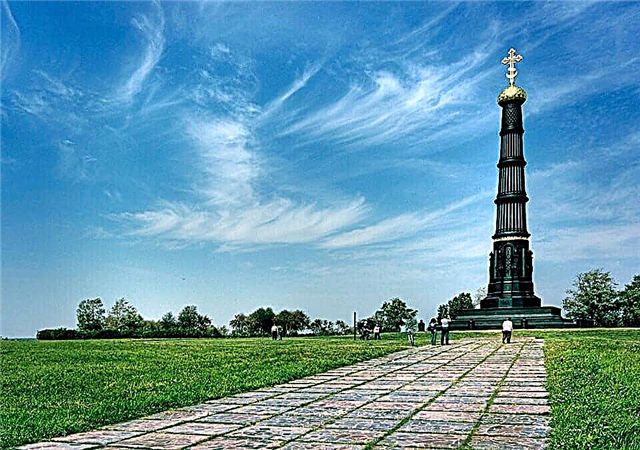
Kulikovo Field can rightfully be called the first field of military glory in our country. Crosses, details of armor and weapons are still found here. In the 17th century. the village of Monastyrshchino was founded here, and in the 19th century. it was decided to perpetuate the memory of Russian soldiers. The first to appear was a monument to Dmitry Donskoy. Then the Church of the Nativity of the Virgin and the monument to Sergius of Radonezh. Then there was a big break until the 1960s. Then a branch of the Tula Museum of Local Lore was opened here. For the 600th anniversary of the Battle of Kulikovo, an exposition opens in the Church of St. Sergius of Radonezh. Today in the village of Monastyrshchino there is a museum and memorial complex.
Yasnaya Polyana
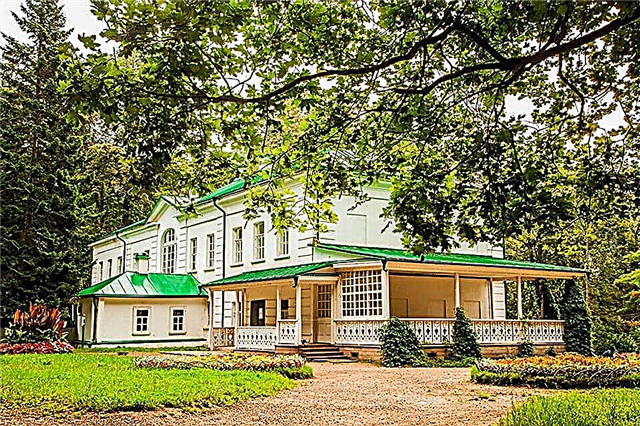
If you are in Tula, you need to take the opportunity and visit Yasnaya Polyana, where one of the most famous literary museums in Russia is located - the house where L.N. Tolstoy. The museum was established here in 1921. The Tolstoy family began to belong to these lands in 1763, when the great-grandfather of the writer S.F. Volkonsky. His son Nikolai Sergeevich expanded his property and was actively involved in development.
Among other things, an architectural ensemble with a manor house was created. Tolstoy's childhood was spent in the estate. In 1847 he came here from Kazan already as a host. His wife and children will also live here. In Yasnaya Polyana, Leo Tolstoy will write his best works, and here he will be buried. You can visit the museum buildings every day from 10 to 15.30, closed on Mondays.
This is the “bouquet of attractions” that Tula gives to tourists. Of course, in 1 day you will not visit all its corners. Trips outside the city also require considerable time - for example, to Yasnaya Polyana or Polenovo. You just need to choose what is of the greatest interest to you. But if you discover Tula for yourself, you will never forget this city.

